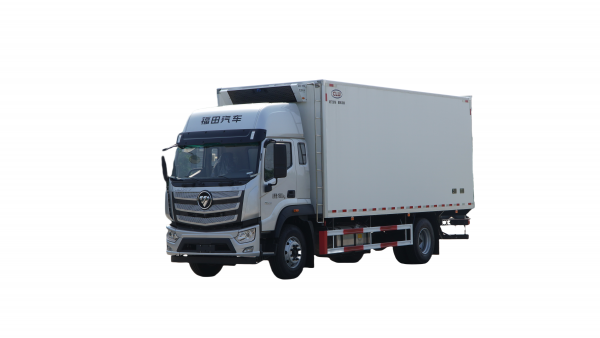Navigating the Road Ahead A Comprehensive Guide to Work Truck Emissions Standards
Introduction
Work trucks play a crucial role in various industries, from construction and agriculture to transportation and delivery services. However, the environmental impact of these vehicles cannot be overlooked, as they are significant contributors to air pollution and greenhouse gas emissions. To address this issue, governments around the world have implemented stringent emissions standards for work trucks to reduce their environmental footprint and promote sustainability.
In this comprehensive guide, we will delve into the intricacies of work truck emissions standards, exploring their importance, evolution, and impact on the industry. From regulatory requirements to technological advancements, we will examine how these standards are shaping the future of work truck operations and driving the transition towards cleaner and more efficient vehicles.
The Importance of Work Truck Emissions Standards
Work trucks, including vehicles such as dump trucks, delivery vans, and utility vehicles, are known for their heavy-duty nature and high fuel consumption. As a result, they emit significant amounts of pollutants such as nitrogen oxides (NOx), particulate matter (PM), and carbon dioxide (CO2), which have detrimental effects on air quality and public health. In urban areas, where work trucks are prevalent, these emissions contribute to smog formation, respiratory issues, and overall environmental degradation.
Emissions standards for work trucks are essential for mitigating these impacts and reducing the carbon footprint of commercial fleets. By setting limits on the amount of pollutants that vehicles can emit, regulators aim to improve air quality, protect public health, and combat climate change. These standards also drive innovation in the automotive industry, encouraging manufacturers to develop cleaner technologies and more fuel-efficient vehicles.
Evolution of Work Truck Emissions Standards
The regulation of emissions from work trucks has evolved significantly over the past few decades in response to growing environmental concerns and advances in technology. In the United States, the Environmental Protection Agency (EPA) has been at the forefront of setting emissions standards for heavy-duty vehicles, including work trucks, through programs such as the Clean Air Act and the National Clean Diesel Campaign.
One of the landmark regulations in this area is the EPA's Heavy-Duty Engine and Vehicle Standards, which set limits on NOx and PM emissions from diesel engines used in work trucks. These standards have been periodically updated to reflect advancements in emission control technology and align with international guidelines such as those set by the European Union and the United Nations.
In https://www.worktruckmaker.com/clw-rear-double-axle-compressed-garbage-truck/ , there has been a growing focus on reducing greenhouse gas emissions from work trucks to address climate change concerns. The EPA's Greenhouse Gas Emissions Standards for Medium- and Heavy-Duty Engines and Vehicles aim to limit CO2 emissions from trucks and buses, promoting the use of cleaner fuels and more efficient engine technologies.
Impact of Emissions Standards on the Industry
The implementation of emissions standards has had a profound impact on the work truck industry, influencing vehicle design, manufacturing processes, and operational practices. Manufacturers have had to invest in research and development to meet the stringent requirements set by regulators, leading to the adoption of new technologies such as selective catalytic reduction (SCR), diesel particulate filters (DPF), and exhaust gas recirculation (EGR).
These technologies have not only helped reduce emissions from work trucks but have also improved fuel efficiency and overall performance. As a result, fleet operators have seen cost savings in terms of fuel expenditure and maintenance, making cleaner vehicles a more attractive option for their operations.
Moreover, emissions standards have incentivized the adoption of alternative fuels and powertrains in work trucks, such as natural gas, propane, and electric drivetrains. These cleaner fuel options offer lower emissions and reduced dependence on conventional diesel fuel, contributing to a more sustainable and environmentally friendly transportation sector.
Challenges and Opportunities Ahead
While emissions standards have made significant strides in reducing the environmental impact of work trucks, challenges remain in achieving long-term sustainability goals. One of the key challenges is the enforcement of these standards, as compliance monitoring can be complex and resource-intensive for regulatory agencies.
Additionally, the diversity of work truck applications and operating conditions poses challenges in developing universal emissions standards that are effective across all sectors. Different types of work trucks, from heavy-duty construction vehicles to light-duty delivery vans, have varying emissions profiles and requirements, necessitating tailored regulations for each category.
Despite these challenges, there are ample opportunities for further innovation and collaboration in the realm of work truck emissions standards. Continued research and development in clean technologies, such as hydrogen fuel cells and battery electric propulsion, hold promise for reducing emissions and advancing the sustainability of commercial fleets.
Furthermore, partnerships between government agencies, industry stakeholders, and environmental organizations can foster dialogue and cooperation in setting ambitious emissions reduction targets and promoting best practices in work truck operations.
Conclusion

Work truck emissions standards play a vital role in addressing the environmental impact of heavy-duty vehicles and promoting sustainable transportation practices. By setting limits on pollutants such as NOx, PM, and CO2, regulators aim to improve air quality, protect public health, and combat climate change.
The evolution of emissions standards for work trucks has led to advancements in technology and innovation in the automotive industry. Manufacturers have developed cleaner engines, improved fuel efficiency, and explored alternative fuel options to meet regulatory requirements and reduce the carbon footprint of commercial fleets.
Looking ahead, the work truck industry faces challenges in achieving long-term sustainability goals, but also opportunities for further innovation and collaboration. By continuing to invest in clean technologies, foster partnerships, and drive towards a greener future, work truck operators can navigate the road ahead towards a cleaner and more sustainable transportation sector.